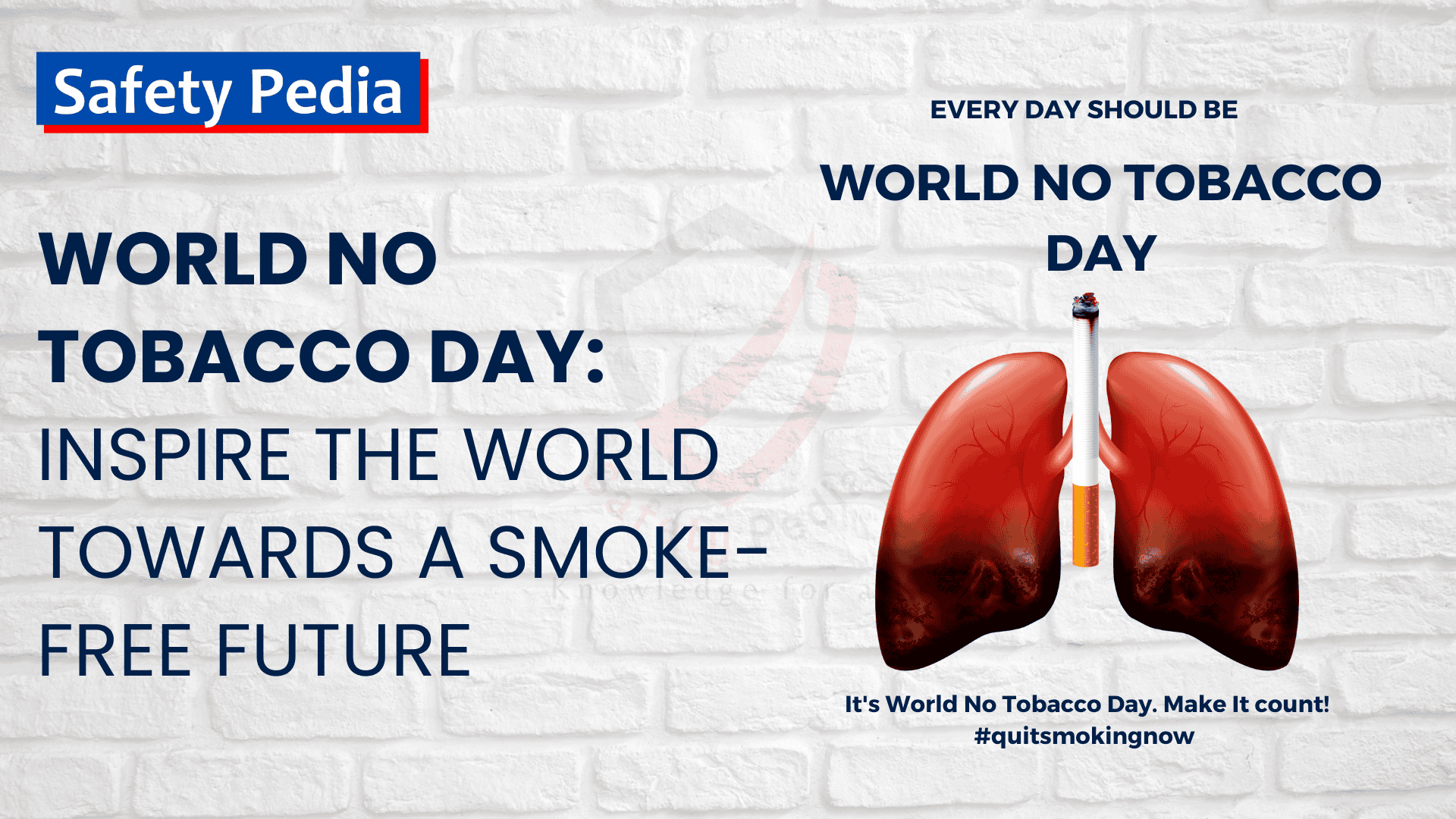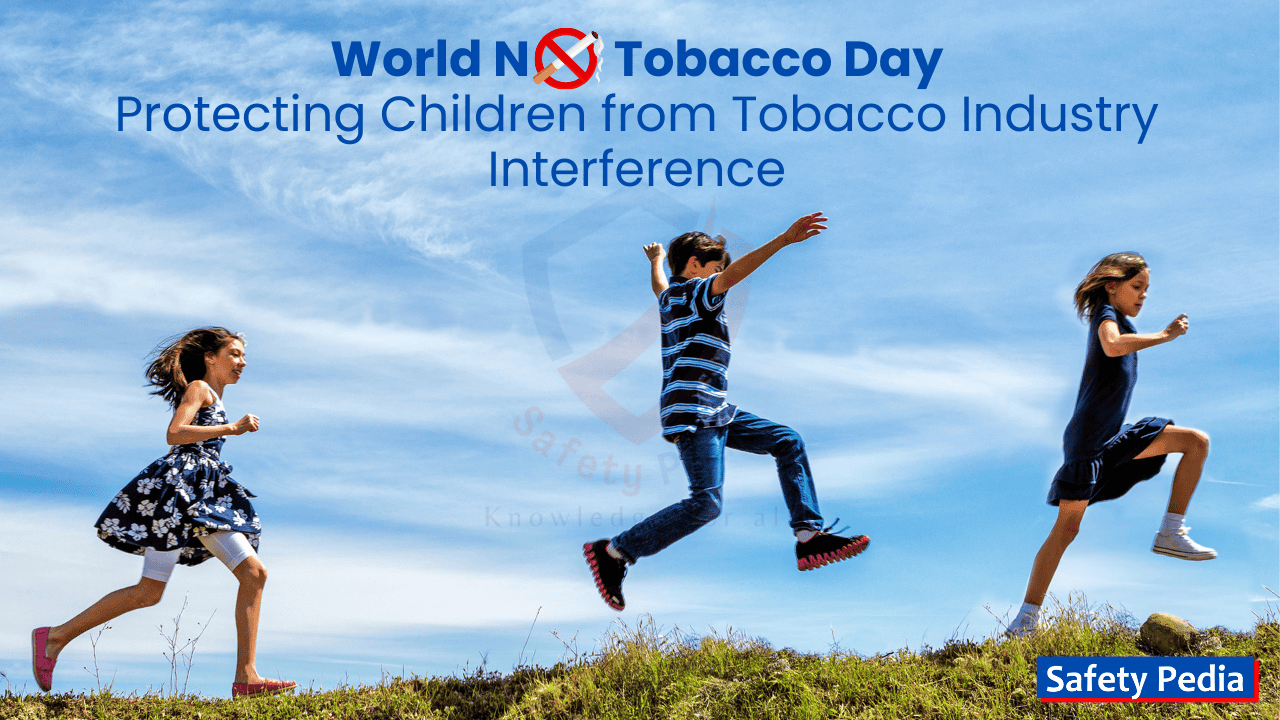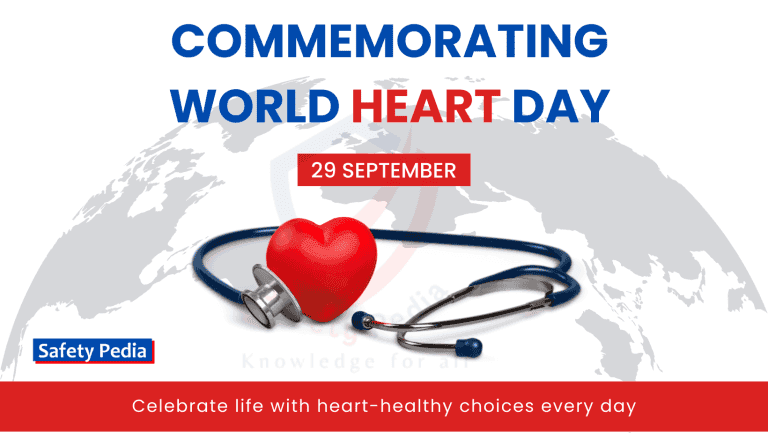
Introduction: World No Tobacco Day Messages
On World No Tobacco Day, May 31st, we reflect on the powerful messages that inspire us to a smoke-free future. Smoking is a global issue that affects millions of lives and contributes to a wide range of health problems. This annual event reminds us of the importance of raising awareness about the dangers of tobacco and promoting a healthier lifestyle.
Through inspiring campaigns and impactful initiatives, organizations worldwide are dedicated to creating a tobacco-free world. From showcasing the devastating effects of smoking to providing support for those looking to quit, World No Tobacco Day aims to educate and empower individuals to make informed choices about their health.
Highlighting the stories of individuals who have overcome tobacco addiction or have been affected by the consequences of smoking, these messages resonate with people on a personal level. They serve as a testament to the fact that it’s never too late to quit and encourage smokers to take the first step toward a smoke-free future.
Together, let’s join hands and spread the message of hope and resilience as we strive toward a world where tobacco no longer holds power over us.
World Health Organization (WHO) – World No Tobacco Day 2024 Theme
On May 31, 2024, the world will observe World No Tobacco Day, a date set aside each year to highlight the risks associated with tobacco use and advocate for effective policies to reduce tobacco consumption. This year’s theme, “Protecting Children from Tobacco Industry Interference,” underscores a critical issue: the aggressive marketing strategies employed by the tobacco industry to target the younger generation.
The World Health Organization (WHO) has long recognized the tobacco epidemic as a significant threat to public health, particularly among the youth. Statistics reveal an alarming trend of e-cigarettes and tobacco products being used by children and adolescents at rates surpassing those of adults. This year, World No Tobacco Day aims to empower young people to raise their voices and demand action from governments worldwide to implement stringent regulations that curb the tobacco industry’s influence on the impressionable minds of children.
The tobacco industry’s tactics are not new; they have been meticulously crafted to hook the next generation of consumers. By employing appealing flavors, engaging marketing campaigns, and leveraging social media platforms, these companies have found a direct channel to influence young people. The WHO’s campaign for World No Tobacco Day 2024 is a call to expose and counter these tactics. The movement seeks to protect our children’s health, rights, and future.
The significance of this day extends beyond a mere annual observance. It is a day that calls for a collective reflection on the progress and challenges ahead. It is a day to reaffirm commitments to enforce laws that protect our youth from the harms of tobacco. It is a day to stand in solidarity with the global community in advocating for a tobacco-free generation.
As we approach World No Tobacco Day 2024, let us all join hands in this vital cause. Let us support the youth in their fight against the tobacco industry’s predatory practices. Let us educate, legislate, and innovate to create a world where every child can grow up free from the influence of tobacco. Together, we can make a difference in safeguarding our children’s and future generations’ health and well-being.

The importance of powerful messages
Powerful messages have the ability to change minds, inspire action, and create a lasting impact. When it comes to raising awareness about the dangers of tobacco and promoting a smoke-free future, these messages play a crucial role. They have the power to reach individuals on a personal level, making them more receptive to the information being shared.
By highlighting the consequences of smoking, these messages create a sense of urgency and encourage smokers to take a step towards quitting. They provide hope and inspiration for those who are struggling with addiction, showing them that it is possible to overcome the challenges and lead a healthier life.
The impact of tobacco on health
Tobacco use is a leading cause of preventable deaths worldwide. It not only affects the health of smokers but also exposes non-smokers to the harmful effects of secondhand smoke.
These are the 16 cancers you are at risk of getting if you smoke:
- Cancer of the lung
- Cancers of the mouth,
- Cancers of the throat
- Cancers of the nose
- Cancers of the sinuses
- Cancers of the oesophagus
- Cancers of the bladder
- Cancers of the kidney
- Cancers of the ureter
- Cancer of the pancreas
- Cancer of the stomach
- Cancer of the liver
- Cancer of the cervix
- Cancers of the ovary
- Cancer of the bowel (colorectal cancer)
- Acute myeloid leukaemia
The impact of tobacco on health is far-reaching and encompasses a wide range of diseases, including:
- Heart disease
- Stroke, and
- Respiratory illnesses.
Smoking damages almost every organ in the body, leading to a higher risk of developing chronic conditions. It also affects the quality of life, reducing overall fitness and increasing the likelihood of premature death. Understanding the devastating effects of tobacco is essential in motivating individuals to quit and preventing others from starting in the first place.
Inspiring the world toward a smoke-free future
Creating a smoke-free future requires a collective effort from individuals, communities, and governments. Inspiring the world towards this goal involves raising awareness about tobacco’s dangers and providing support and resources for those looking to quit.
Powerful messages that inspire hope and resilience motivate individuals to take action. Sharing stories of individuals who have successfully quit smoking or have been affected by the consequences of tobacco use, these messages show that change is possible and that there is a support system available.
Creating powerful messages for World No Tobacco Day
When creating powerful messages for World No Tobacco Day, it’s essential to consider the target audience and the desired impact. These messages should be relatable, informative, and inspiring, focusing on individuals’ personal stories and experiences.
One effective approach is showcasing the transformational journeys of individuals who have quit smoking. By highlighting their struggles, triumphs, and positive changes, these stories serve as a source of inspiration for others who are looking to quit.
Another approach is to showcase the consequences of smoking through powerful visuals and statistics. By highlighting the impact of tobacco on health, these messages create a sense of urgency and encourage individuals to take immediate action.
World No Tobacco Day 2024: Powerful Messages for Protecting Children from Tobacco Industry Interference
- Shield the future – keep our children tobacco-free.
- Nurture young minds, not tobacco habits.
- Children’s health over tobacco wealth.
- Educate, protect, empower – our children deserve a smoke-free world.
- Tobacco companies target our youth; it’s our duty to defend them.
- Healthy children are the real treasure, not tobacco’s false pleasure.
- Let’s extinguish tobacco’s influence to brighten our children’s future.
- Every child deserves a tobacco-free environment to thrive.
- Invest in our children’s well-being, not in tobacco’s deceiving marketing.
- Clear the smoke – safeguard our children’s right to pure air.
- Tobacco’s narrative is addictive; let’s rewrite the story for our children’s sake.
- Prevent the tobacco industry’s interference; prioritize our children’s resilience.
- For a healthier generation, resist tobacco’s temptation.
- Our children are watching; let’s model a life without tobacco.
- Tobacco-free kids today, healthier adults tomorrow.
These messages aim to inspire action and raise awareness about protecting our children from the tobacco industry’s pervasive influence. World No Tobacco Day serves as a reminder of our collective responsibility to encourage a healthier environment for the younger generation free from the clutches of tobacco-related harm.
Some other Inspiring World No Tobacco Day Messages:
Over the years, World No Tobacco Day has seen many impactful messages resonating with individuals worldwide. These messages have taken various forms, including powerful visuals, compelling stories, and thought-provoking slogans.
One example is the “Quit Smoking, Save Lives” campaign, which emphasizes the importance of quitting for personal and societal well-being. This message reminds people that quitting smoking improves individual health and contributes to a healthier community.
Another example is the “Tobacco Takes Lives, Let’s Choose Health” campaign, which focuses on the devastating consequences of smoking. This message highlights the fact that tobacco use is a choice and encourages individuals to make healthier choices for themselves and their loved ones.
In observance of World No Tobacco Day, here is another list of powerful messages that can be shared to raise awareness about the risks of tobacco use and to encourage people to quit smoking:
- Breathe healthily, and live happily. Say no to tobacco.
- Show your real potential – not your addiction. Choose life, not tobacco.
- Tobacco takes moments away; choose to live every minute fully.
- Your health is your wealth; don’t let tobacco bankrupt your future.
- Clear the air: protect our environment and health from tobacco smoke.
- Every cigarette avoided is a victory for life.
- Quit today and live another day. Tobacco is not worth your life.
- Tobacco or health: the choice is yours. Make the right one.
- Stand against tobacco; stand up for your health.
- Tobacco-Free: The Best Path to a Heart-Healthy Life.
- Make Every Day World No Tobacco Day: Commit to Quit!
- Tobacco Costs Lives: Choose to Save Yours.
- Your Family Deserves a Smoke-Free You.
- Tobacco: Don’t Let It Take Your Breath Away.
- Stand Strong Against Tobacco: Your Health is Your Wealth.
These messages empower individuals to make healthier choices and support a tobacco-free environment. Let’s spread the word and make a difference.
World No Tobacco Day is a reminder that a tobacco-free world is not only possible but necessary for the health and well-being of future generations.
Spreading the message on social media
In today’s digital age, social media platforms provide a powerful tool for spreading messages and raising awareness. Organizations and individuals can leverage social media’s reach to amplify their messages and engage with a wider audience.
Creating shareable content, such as infographics, videos, and quotes, can help increase the message’s visibility. Encouraging individuals to share their personal stories and experiences can also promote community and inspire others to take action.
Collaborating with influencers and organizations
Collaborating with influencers and organizations who are passionate about promoting a smoke-free future can significantly amplify the impact of the message. Influencers, with their large following and influence, can help spread the message to a wider audience and engage individuals who may not have been reached otherwise.
Working with organizations that are dedicated to tobacco control and public health can also provide valuable resources and expertise. By joining forces, these organizations can create powerful campaigns and initiatives that have a lasting impact on individuals and communities.
World No Tobacco Day events and campaigns
World No Tobacco Day is marked by various events and campaigns worldwide. These initiatives aim to raise awareness about the dangers of tobacco, encourage individuals to quit smoking and promote a smoke-free future.
Events such as awareness walks, health fairs, and educational seminars provide an opportunity for individuals to learn more about the consequences of smoking and the resources available for quitting. These events also serve as a platform for individuals to share their stories and connect with others on a similar journey.
Online and offline campaigns play a crucial role in spreading the message and generating awareness. From social media campaigns to public service announcements, these initiatives aim to reach individuals through various mediums and engage them in the conversation about tobacco control.
Effective Policies to Combat Tobacco Consumption
Tobacco use remains a significant public health challenge globally, with substantial impacts on health systems, economies, and individuals. Various evidence-based strategies have been implemented worldwide to combat this issue, showing promising results in reducing tobacco consumption. Here are some of the most effective policies:
- Comprehensive Smoke-Free Laws: Implementing laws prohibiting smoking in all indoor public places, workplaces, and public transport has reduced exposure to second-hand smoke and lowered smoking prevalence.
- Tobacco Taxation: Increasing taxes on tobacco products is one of the most effective ways to reduce tobacco use, especially among young people and low-income populations. Higher prices discourage the initiation of tobacco use and encourage cessation.
- Mass Media Campaigns: Large-scale health education campaigns that inform the public about the dangers of tobacco use can shift public perception and reduce tobacco consumption.
- Plain Packaging and Graphic Health Warnings: Standardized packaging, free from branding and with prominent health warnings, has made tobacco products less attractive to consumers.
- Bans on Tobacco Advertising, Promotion, and Sponsorship: Comprehensive bans can reduce tobacco consumption by limiting the industry’s ability to market its products, particularly to youth and vulnerable populations.
- Access to Cessation Services: Providing support for tobacco users to quit, including counseling and medication, can significantly increase the success rate of cessation attempts.
- Monitoring and Surveillance: Monitoring tobacco use and the effectiveness of control policies is crucial for informed decision-making and policy adjustments.
- Enforcement of Tobacco Control Laws: Effective implementation and enforcement of tobacco control measures are essential for the success of any policy.
These policies align with the WHO Framework Convention on Tobacco Control (FCTC), the first international treaty negotiated under the auspices of the WHO, which provides a comprehensive roadmap for tobacco control.
The success of these policies depends on the commitment of governments, civil society, and international organizations to work collaboratively. Addressing the tobacco industry’s attempts to undermine these policies through continuous monitoring and stringent regulations is vital.
Supporting Tobacco Cessation in Your Community: A Guide to Making a Difference
Tobacco cessation is a vital public health endeavor that requires the collective efforts of individuals, communities, and governments to be successful. If you want to support tobacco cessation efforts in your community, you can contribute to this cause in several impactful ways. Here’s a guide to help you get started:
- Educate Yourself and Others: Knowledge is power. Learn about the dangers of tobacco use, the benefits of quitting, and the best practices for cessation. Share this information with your community through workshops, seminars, or social media campaigns.
- Advocate for Policy Change: Engage with local policymakers to advocate for more robust tobacco control policies, such as smoke-free laws, tobacco taxes, and restrictions on tobacco advertising. Policy change can create an environment that supports tobacco users in their journey to quit.
- Support Local Cessation Programs: Many communities have local cessation programs offering counseling, support groups, and resources for quitting. Volunteer your time, donate resources, or spread the word about these valuable services.
- Create a Supportive Environment: Encourage local businesses and employers to create smoke-free workplaces and to offer cessation support to their employees. A supportive environment can significantly increase the chances of successful quitting.
- Engage with Health Professionals: Collaborate with healthcare providers to ensure they have the necessary tools and training to assist patients with quitting. Healthcare professionals play a crucial role in identifying tobacco users and providing them with cessation resources.
- Promote Tobacco-Free Youth Initiatives: Protecting the youth from tobacco industry interference starts with education and prevention. Support programs that aim to prevent tobacco initiation among young people and promote healthy, tobacco-free lifestyles.
- Utilize Social Media: Social media is a powerful tool for raising awareness and promoting tobacco cessation. Use these platforms to share success stories, facts about the dangers of tobacco, and information about local cessation resources.
- Participate in National Campaigns: Get involved in national tobacco cessation campaigns, such as World No Tobacco Day, which can amplify your efforts and connect you with a more extensive network of like-minded individuals and organizations.
- Support Mental Health Services: Recognize the link between mental health and tobacco use. Support mental health services that can address the psychological aspects of addiction and provide comprehensive care for those trying to quit.
- Fundraising for Cessation Efforts: Organize fundraising events to support tobacco cessation initiatives. Funds can help provide resources for cessation programs, support research, and aid in implementing community-based interventions.
By taking these steps, you can significantly impact tobacco cessation efforts in your community. Remember, every action counts; we can work towards a tobacco-free future together. Your involvement can help create a healthier community and empower individuals to lead tobacco-free lives.
Steering the Road to Tobacco Cessation: Understanding the Challenges
The journey to quitting tobacco is a personal and often challenging one, with various obstacles that can make the process difficult. Understanding these challenges is crucial for individuals who are trying to quit, as well as for those supporting them. Here are some common hurdles faced during tobacco cessation:
- Nicotine Withdrawal: Nicotine is a highly addictive substance, and withdrawal can lead to symptoms such as irritability, cravings, sleep disturbances, and increased appetite. These symptoms can be intense and are often a significant barrier to quitting.
- Habitual Behavior: Smoking or using tobacco often becomes a deeply ingrained habit associated with daily routines or activities, making it hard to break the cycle of use.
- Emotional Dependence: Many tobacco users rely on smoking as a way to manage stress, anxiety, or depression, creating an emotional dependence that can be challenging to overcome.
- Social Triggers: Social situations, especially those where others are using tobacco, can trigger cravings and make it difficult to maintain abstinence.
- Weight Gain Concerns: The fear of gaining weight after quitting tobacco can deter some individuals from attempting to quit or can lead to relapse if weight gain occurs.
- Lack of Support: Without adequate support from family, friends, or a healthcare provider, quitting can feel isolating and overwhelming.
- Misinformation: Myths and misconceptions about quitting, such as the belief that the damage is already done, can discourage tobacco users from trying to quit.
- Access to Cessation Aids: Some individuals may have difficulty accessing cessation aids, such as nicotine replacement therapy or prescription medications, due to cost or availability.
- Mental Health Challenges: Co-occurring mental health conditions can complicate the cessation process and may require additional support and treatment.
- Relapse: Relapse is a standard part of the cessation journey. It can be discouraging, but it is essential to view relapse as a learning opportunity rather than a failure.
Addressing these challenges requires a comprehensive approach that includes education, support, and access to practical cessation resources. Healthcare providers play a vital role in this process by offering advice, support, and treatment options tailored to the individual’s needs. Public health campaigns and policies that create supportive environments for cessation can significantly aid individuals in quitting.
For those looking to quit, it’s important to remember that while the road may be challenging, the benefits of quitting tobacco are immense and far-reaching. They impact physical health, quality of life, and financial well-being.
Managing Nicotine Cravings During Withdrawal: Strategies for Success
Nicotine withdrawal is a challenging phase for individuals attempting to quit smoking or using tobacco products. The body’s dependence on nicotine can lead to intense cravings, which are often the primary reason for relapse. However, with the right strategies and support, managing these cravings is possible, leading to a successful cessation journey. Here are some effective methods to help you cope with nicotine cravings during withdrawal:
- Nicotine Replacement Therapy (NRT): NRTs, such as patches, gum, lozenges, inhalers, or nasal sprays, provide a measured dose of nicotine to the body without the harmful chemicals found in tobacco. This can alleviate withdrawal symptoms and reduce cravings as you wean off nicotine.
- Prescription Medications: Medications like varenicline (Chantix) and bupropion (Zyban) can help reduce cravings and withdrawal symptoms. These medications work on the brain’s chemistry to lessen the pleasurable effects of nicotine.
- Behavioral Support: Counseling, whether individual, group, or telephone, can increase one’s chances of quitting. It can also provide strategies for handling cravings and developing coping mechanisms.
- Mindfulness and Relaxation Techniques: Practices such as meditation, deep breathing exercises, or yoga can help manage stress and reduce the intensity of cravings.
- Physical Activity: Regular physical activity, such as walking, running, or swimming, can reduce nicotine cravings and withdrawal symptoms. Exercise also releases endorphins, which improve mood and reduce stress.
- Delay Tactics: When a craving hits, delay acting on it. Wait 10 minutes and distract yourself. Often, the urge to smoke will pass or decrease in intensity.
- Healthy Snacking: Keep your mouth busy with healthy snacks like carrot sticks, nuts, or sunflower seeds. This can also help with the oral fixation associated with smoking.
- Hydration: Drinking plenty of water can help flush nicotine out of your body and reduce cravings.
- Avoid Triggers: Identify situations that trigger your nicotine cravings and avoid them. This may include specific social settings, alcohol, or coffee.
- Social Support: Lean on friends, family, or support groups for encouragement and accountability. Sharing your experiences with others who understand can be incredibly supportive.
- Create a Smoke-Free Environment: To reduce temptation, remove all tobacco products from your home, car, and workplace.
- Celebrate Milestones: Set short-term goals and celebrate when you reach them. This can boost your motivation to stay tobacco-free.
- Cognitive Behavioral Therapy (CBT): CBT can help you identify and change thoughts and behaviors that trigger tobacco use.
- Alternative Therapies: Some people find relief in alternative therapies like acupuncture or hypnosis, although their effectiveness varies from person to person.
- Plan for Coping with Cravings: Have a plan for when cravings strike. This could include calling a friend, practicing deep breathing, or engaging in a hobby.
It’s important to remember that cravings are temporary and will decrease in intensity and frequency over time. Each craving you overcome brings you one step closer to being tobacco-free. For additional support and resources, consider contacting healthcare providers or exploring cessation programs offered by local health departments and organizations.
Imagine this: for nearly four weeks, millions of people around the world willfully resist the urge to eat, drink and smoke from sunrise to sunset during the month of Ramadan. It’s a testament to the incredible power of willpower, a strength that resides within us all. What if you could harness that same power for a purpose that directly benefits your health and well-being?
Cravings are a fact of quitting smoking. But here’s the good news: they’re temporary. Each time you resist that urge, you’re not just denying yourself a cigarette; you’re building a stronger, healthier you. It’s like a mini-fast, a personal challenge with incredible rewards.
Think about it. If Muslims can abstain from something such as food, water, drugs and smoking for a significant period, surely you can overcome the temporary discomfort of a cigarette craving. It’s all about mindset. See quitting smoking not as deprivation, but as an investment in your future. Imagine a future where you breathe deeply and easily, where your taste buds come alive, and where you have the energy to enjoy life truly.
And you don’t have to go alone to it. There are countless resources available to help you succeed. Talk to your doctor, explore cessation programs, or connect with support groups. Surround yourself with others who understand the struggle and can celebrate your victories.
Quitting smoking is a powerful act of self-love. It’s about taking control of your health and reclaiming your life. So, the next time a craving hits, remember this: it’s temporary. With each challenge overcome, you’re one step closer to freedom. Don’t you deserve that freedom? Take the first step today.
By employing a combination of these strategies, you can effectively manage nicotine cravings during withdrawal and move towards a healthier, smoke-free life. Remember, the journey to quitting is unique for everyone, and finding the right combination of techniques that work for you is key to success. For more detailed guidance and support, visit reputable health websites and consult with healthcare professionals specialising in tobacco cessation.
Conclusion: Our role in creating a smoke-free future
As individuals, we have a role in creating a smoke-free future. By educating ourselves and others about the dangers of tobacco, supporting those who are looking to quit, and advocating for more robust tobacco control measures, we can contribute to the global effort to reduce tobacco use.
World No Tobacco Day is a powerful reminder to raise awareness and inspire change. Through powerful messages that resonate with individuals personally, we can empower others to make informed choices about their health and work towards a smoke-free future.
Together, let’s join hands and spread the message of hope and resilience as we strive toward a world where tobacco no longer holds power over us. With every powerful message, we step closer to a healthier, smoke-free future for all.
Join the global movement on World No Tobacco Day 2024 to shield our youth from tobacco industry tactics. Support initiatives to prevent tobacco use among children and cultivate a healthier, smoke-free future.
References:
https://www.who.int/campaigns/world-no-tobacco-day/2024
16 cancers caused by smoking
https://fctc.who.int/who-fctc/overview
Related posts:

How to Measure Safety Performance?
Struggling to measure your workplace safety performance? Learn how to measure safety performance with key metrics to improve workplace safety. Discover essential indicators for risk assessment, compliance, and accident prevention.

The Consequences of Poor Safety Performance: Risks You Can’t Afford to Ignore
Discover the potential consequences of poor safety performance in the workplace and how they can negatively impact both employees and the company as a whole.

18 Common Challenges in Improving Safety Performance at Work
Discover 18 common challenges in improving safety performance at work. Learn how to overcome these obstacles for a safer workplace.
Join Our Safety Community!
Stay informed with the latest tips and insights on occupational health, safety, and the environment.






